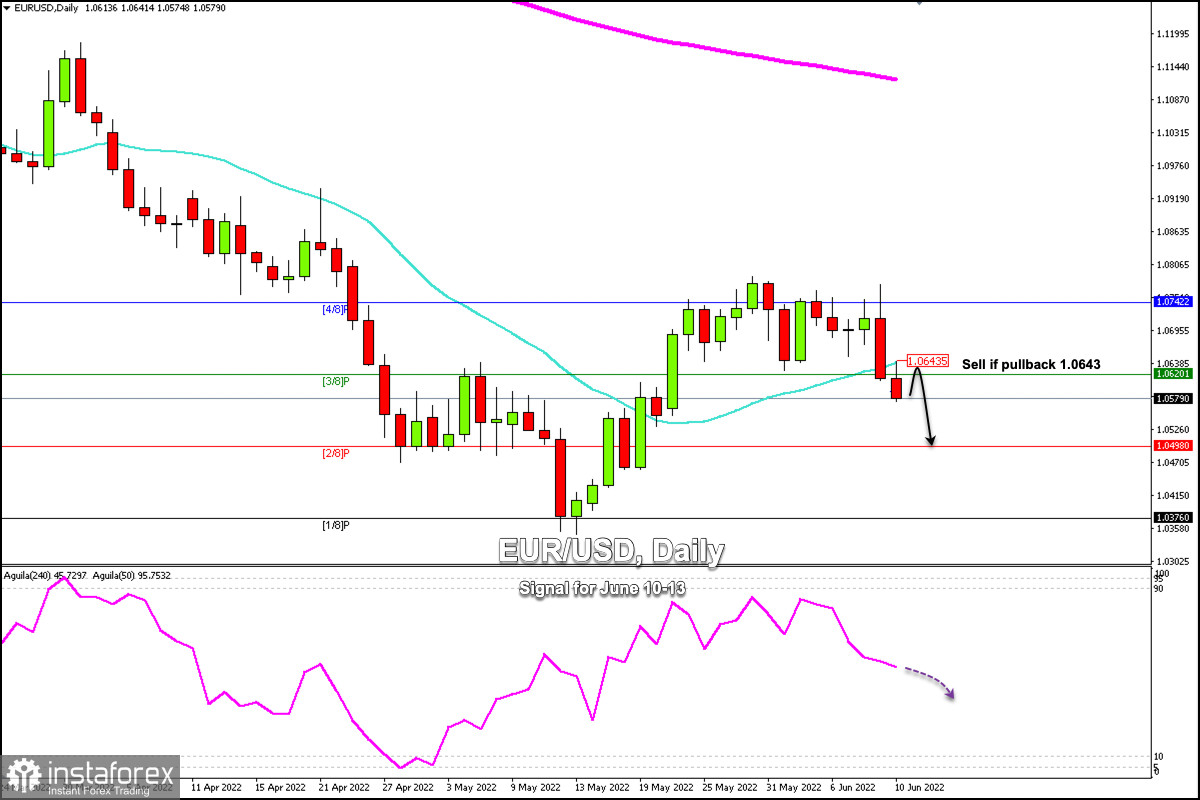
EUR/USD remains under downward pressure and extended the decline that started on Thursday after the European Central Bank meeting. The pair reached 1.0570, the lowest level since May 23, and remains below 1.0600 prior to US inflation data.
The market is focusing and waiting for the US inflation data for May to be published at 8:30 am in approximately 2 hours. This data will be taken into account for the FOMC decision next week.
The consumer price index is expected to remain at 8.3%. In April, the inflation rate fell from the 40-year high of 8.5%. Monthly prices are forecast to rise 0.7%, more than twice exceeding the 0.3% rise recorded in April.
This data could have a wide impact on the market. Before knowing this data, the US dollar is rising. USDX strengthened and now it is trading at 103.63. A bullish bias is seen. The index has reached highs since May 19th.
On the daily chart, we can see that the euro-dollar is below the 21 SMA and below 3/8 Murray. Given that the euro is now below these levels, the outlook could remain negative as the euro could drop to 2/8 Murray around 1.0498.
Conversely, a daily close above 1.0645 (21 SMA) could ease bearish pressures for the euro and it could once again reach the zone 4/8 Murray at 1.0742.
The inflation data that will be known in the next few hours could give strong volatility to the euro, thus allowing it to return to the resistance zone of 1.0620 (3/8) or 1.0643 (21 SMA). If this happens and the euro fails to consolidate above the 21 SMA, it could be considered as a signal to sell with targets at 1.0550 and 1.0498 (2/8 Murray).
The eagle indicator is giving a negative signal and the euro is likely to continue its downward trend in the coming days. Therefore, as long as the EUR/USD pair trades below 1.0650, any pullback will be seen as an opportunity to continue selling.
 English
English 
 Русский
Русский Bahasa Indonesia
Bahasa Indonesia Bahasa Malay
Bahasa Malay ไทย
ไทย Español
Español Deutsch
Deutsch Български
Български Français
Français Tiếng Việt
Tiếng Việt 中文
中文 বাংলা
বাংলা हिन्दी
हिन्दी Čeština
Čeština Українська
Українська Română
Română

